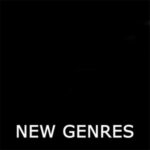Music is the one language that can be understood throughout the world. While the genres of music may be different and there are various styles that are appreciated, there is no doubt that music is embedded in our everyday lives, whether we realize it or not. I teach music, having a music education background, and I have come in contact with so many who would love to learn how to play an instrument, learn how to sing, or learn how to read music. For those of us who look at music and think that you have to have an extensive musical background, play an instrument, or have education to read, well, this is simply not true! In order to read music, and teach yourself you may want to purchase some very basic how to read music books. You can find these books either at your local music store or even ask your school’s band director or instructor to borrow some basic and beginning music books. If you cannot get a hold of any beginning books right away, do not fret! Really the secret to teaching yourself how to read music is counting to 8 and beyond! Really, that is it!
Easy lesson: if you know anything about music or heard someone who plays or sings, you will hear about these notes. Even if you have not heard any of this, this article will help. There are only 8 notes to worry about and they are: ACC, D, E, F, G, A, B, C. The easiest way to learn these is to give them number values. In other words, C=1; D=2; E=3, and so on until you have the last C = 8. The reason we start with C and not A like you would the alphabet is because C is the starting point on any keyboard and it really is the central note in music. So, after you have your number values and associated them with each of your 8 notes, it is time to put them on a staff. Ever heard of Every Good Boy Does Fine? and F.A.C.E.? When you are looking at your staff which has five lines and 4 spaces this is where your notes on the staff come into play. If you want, you can even draw five lines with four spaces in between on a piece of blank paper. Your E is on the first line on bottom, G second, B third, D fourth, and F fifth. In your spaces, there are your F in first space from the bottom, A second space, C third, and E fourth.
Now here’s the question I get, why are there two E’s, Two F’s etc.? Well, basically every note has the opportunity to be used twice. If there is the F on the first space from the bottom, then the F can be used on the higher staff and the number value for that would be (11). One note for a space, one note for a line. That’s all there is to that. Once you have your notes memorized where they go, then putting numbers to them can be easy if you can remember that 1 = C. Remember 8 is the magic number there are ONLY 8 notes to work with! So, if you have a low F(4) in the first space, then a high F (12) would be placed on the staff. Below you see several F (4) notes as an example. Also, there are notes below that first E! You will often see musical notes that go below the staff namely C (1) and D (2). C will be on your line below E and D.
So why give numbers to the notes? I find that when teaching students to read, it is much easier for them to remember numbers.If asked to look at a staff and say there are several Fs (4s) in a row, students can tell me that there are Fs because they associate this note with the number 4.
This is very basic information and there is so much more to learn. But I find that when teaching music, students learn easier when they can associate numbers with their notes. Piano or keyboard particularly helps you visualize these notes. Next would be to learn rhythms, note values etc. Next time you are in a place that sells sheet music, do not be afraid to pick a piece up and see if you cannot tell what notes are on the page! Of course, if you play an instrument that will help, no denying that. But if you look up some of the greatest artists that ever lived, they will tell you that they learned to play their instruments by ear and they do not read a note of music. One artist who comes to mind and is a personal favorite is guitar legend Stevie Ray Vaughan. He was one of the most talented guitarists, most musicians will testify to that, however, he learned to master his guitar without reading music. He even admits in a biography that if he had learned to read then his time learning his look at instrument would have been much easier! There are several books that gives a number by note. Fake books are an excellent source of numbers and notes. Also, if you want to further advance your knowledge visit http://www.notationmachine.com/how_to_read_sheetmusic/readingmusic.htm, another great site on the basics of learning music!
So see if this works for those of you who really want to learn how to read music! Learning the notes are the very first step in doing so.



